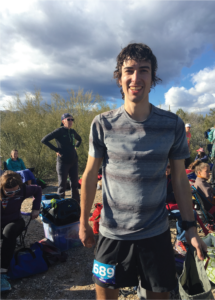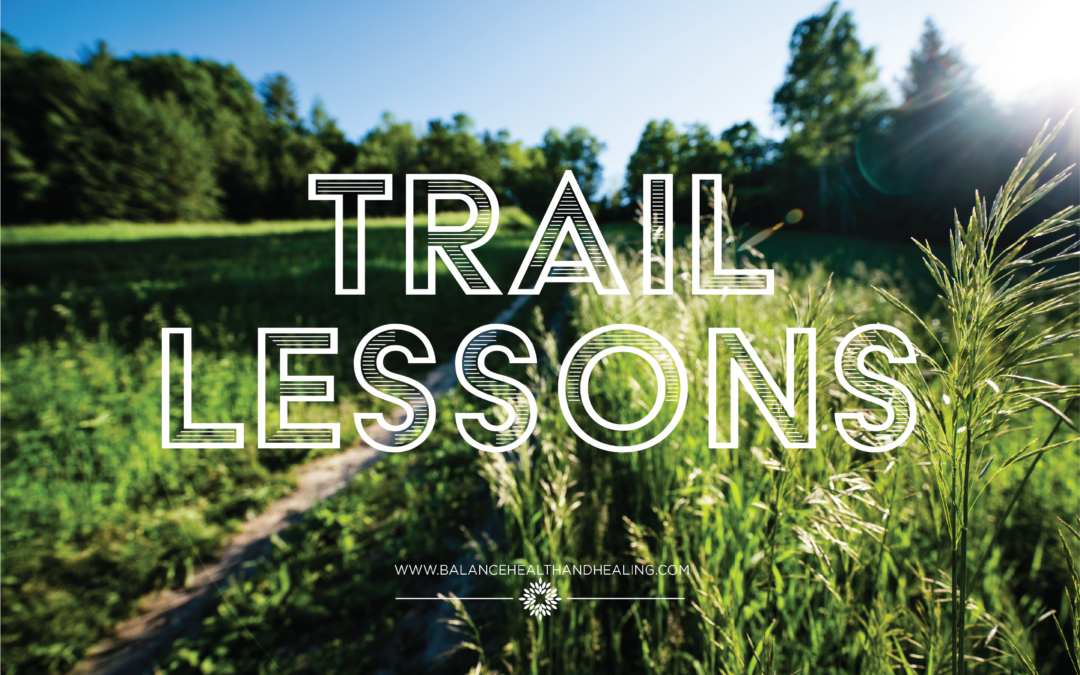A college cross country teammate of mine once said, “You either die on the track or live long enough to see yourself run hundreds of miles on trails.” In our college town of Ashland, OR, it was easy to understand why. The city boasts beautiful, smooth mountain trails. It’s a mecca for runners all over the country.
While the rigor of graduate school has prevented me from racing as well or as often as I’d like, it hasn’t prevented me from pacing other runners in long distance ultras. Just this year, I’ve paced three (two 100-milers and one 100k) and have taken some lessons from the trail.
Before jumping into the specifics, I’ll explain the role of an ultra trail pacer. Unlike a track pacer, an ultra pacer doesn’t usually serve the role of setting the right clip. He or she serves the role, instead, of guiding the racer through the massive challenges of getting to the finish line as quickly and strongly as possible. Ultra pacers do this by running a portion of the race with the runner, usually in the latter half, providing company, encouragement, and a voice of reason. Some of the more striking things I’ve noticed are the similarities between pacing ultra runners and conducting psychotherapy.
People Go Through Dark Times
 When people go to dark places, they can’t see the light. You must not only see it for them but convince them that hope is real. You have to be genuine. And sometimes that means saying things people don’t want to hear. It means seeing someone you care about in pain and knowing their pain could stop, but pushing them on anyway, because you know they’ll be glad for it later.
When people go to dark places, they can’t see the light. You must not only see it for them but convince them that hope is real. You have to be genuine. And sometimes that means saying things people don’t want to hear. It means seeing someone you care about in pain and knowing their pain could stop, but pushing them on anyway, because you know they’ll be glad for it later.
My close friend, Blake, sat on a stump at mile 65 of 100 and said he couldn’t stop thinking about how impossible it felt to go another 35. I could see it in his eyes–he was contemplating dropping out. I told him, “My job right now is to make sure you don’t do anything you regret tomorrow. Barring a medical emergency, dropping out would be one of those things.”
Trudging on, step by laborious step, at mile 67, Blake asked, “How am I going to finish?”
“Just like this,” I said, “if you have to.” He admitted later that he hated me in those moments. He, like anyone, wanted to feel better right then. Considering only short-term consequences, it was a no-brainer. Why deal with the pain when you could quit and find instant relief? As it turned out, by mile 80, where I tagged out and another pacer tagged in, Blake had caught a second wind. He finished flying and full of life. And he was grateful I didn’t let him quit when his instincts pulled him so hard in that direction.
As Uncle Iroh said to his nephew, Zuko, in Avatar: The Last Airbender, “You must never give in to despair. Allow yourself to slip down that road and you surrender to your lowest instincts. In the darkest times, hope is something you give yourself; that is the meaning of inner strength.” Trust me when I say hope is easier to find when you have a companion or guide, especially one who cares and understands your struggle. Finding inner strength does not have to be a lonely endeavor.
Accomplishment Takes Grit
 A theme that jumps out to me as a pacer and as a therapist is that growth and accomplishment require vast stores of grit. They require endurance and an ability to manage difficulty. Guiding people through the rigors of an ultra and through the challenges of personal growth feels, in many ways, the same. My friend, Eli White, took a methodical approach to the Black Canyon 100k near Phoenix, AZ. Joining him for most of the race’s second half, I watched as he faced the Arizona heat on tired legs. He stuck to his plan of eating every 45 minutes. Runners passed him, but he never reacted negatively–just stuck to his plan. He finished absolutely blazing, passing back every runner who passed him, and then some.
A theme that jumps out to me as a pacer and as a therapist is that growth and accomplishment require vast stores of grit. They require endurance and an ability to manage difficulty. Guiding people through the rigors of an ultra and through the challenges of personal growth feels, in many ways, the same. My friend, Eli White, took a methodical approach to the Black Canyon 100k near Phoenix, AZ. Joining him for most of the race’s second half, I watched as he faced the Arizona heat on tired legs. He stuck to his plan of eating every 45 minutes. Runners passed him, but he never reacted negatively–just stuck to his plan. He finished absolutely blazing, passing back every runner who passed him, and then some.
One big difference between pacing and therapy: the extreme discipline and courage it takes to make changes in therapy often escape the public eye. It takes as much grit to overcome an eating disorder as is does to run 100 miles, but most of the action in the former occurs internally. Rarely do people post flashy photos on Instagram about how they have quieted their inner critic and channeled their energies into more valued actions. This process is non-visual. It’s subtle. But it’s every bit as powerful and important as finishing a physical feat.
Flexibility is Key
Clearly, it pays to have a plan and stick to it. But over time, it also pays to respond to hiccups in the plan flexibly. While pacing my brother, Ryan, in a 100-mile race in Pocatello, ID, I witnessed an expert in his element. After executing the first half of the race with perfect patience, Ryan surged too hard in the middle, and his zeal left him fatigued for the last 20 miles. Still, throughout this stretch, he exuded calmness. He shifted his pace, took his time eating at aid stations, and held on to win the race.
race in Pocatello, ID, I witnessed an expert in his element. After executing the first half of the race with perfect patience, Ryan surged too hard in the middle, and his zeal left him fatigued for the last 20 miles. Still, throughout this stretch, he exuded calmness. He shifted his pace, took his time eating at aid stations, and held on to win the race.
Billy Yang, an outdoor filmographer, described the process of running 100 miles as “a life in a day.” An event of its nature incites many highs and lows. In my experience as a counselor, a course of therapy can have similar properties. People arrive ready to grow, and the process can be both painful and exhilarating. It takes a willingness to act in new ways, to face what scares us, and to adjust calmly when life hits back. Neither the path to finish a race nor the journey of psychological healing is linear. But in the end, most people lean back, exhausted and happy, and say, “That was so worth it.”

